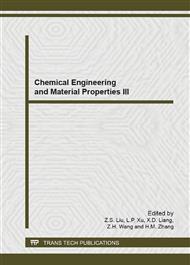p.32
p.37
p.42
p.46
p.51
p.56
p.60
p.64
p.68
Ultra-Thin Shellac Fibers Fabricated Using Two Different Electrospinning Processes
Abstract:
The present study report two types of ultra-thin shellac fibers that were fabricated using a traditional single fluid electrospinning and a modified coaxial electrospinning. Ethanol was exploited as the solvent of shellac and also a sheath fluid of the coaxial process. A camera was used to observe the electrospinning processes and scanning electron microscope was taken to investigate the prepared shellac nanofibers. A single fluid electrospinning of 64% (w/v) shellac solutions not only clogged the spinneret now and then, but also resulted in fibers with a spindles-on-a-string morphology under a flow rate of 1.0 mL/h and an applied voltage of 12 kV. In sharp contrary, a coaxial electrospinning of 80% (w/v) shellac solutions (under a sheath and core flow rate of 0.2 and 0.8 mL/h, respectively, and an applied voltage of 12 kV) furnished linear nanofibers with an average diameter of 740 ± 60 nm. With the same outflows from the nozzles of spinneret, the ultrathine nanofibers from the modified coaxial process surpassed those from the single fluid process in terms of fibers’ morphology and size. The modified coaxial process described here expands the capability of electrospinning process and opens a new way to obtain thinner nanofibers with fine structural uniformity.
Info:
Periodical:
Pages:
51-55
Citation:
Online since:
August 2014
Authors:
Keywords:
Price:
Сopyright:
© 2014 Trans Tech Publications Ltd. All Rights Reserved
Share:
Citation:


